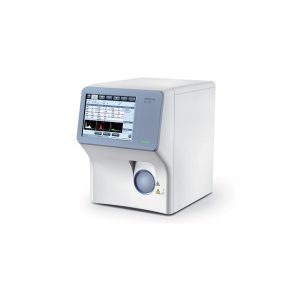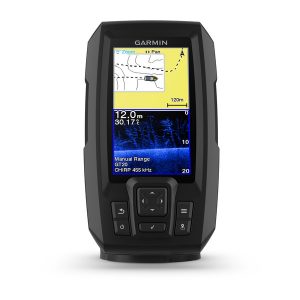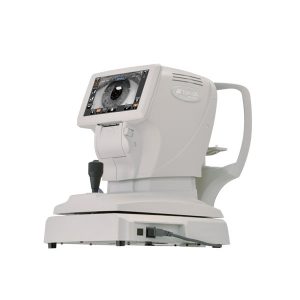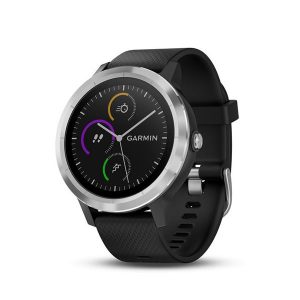Biometry + Topo, IOL Power Calculation, Aladdin, W/O Table
- Measures and displays trends in AL changes.
- Allows you to monitor change progression.
- Charts and tracks refractive variations.
- Provides comprehensive printouts.
Description
Select the Right IOL for Your Patient
The Aladdin is an easy-to-use, combination optical biometer and full corneal topographer. 9-in-1 features include optical coherence biometry, Placido topography, wavefront analysis of the cornea, IOL calculation suite, pupillometry, DICOM connectivity and the NEW RX/AL
Trends Module.
Posterior & Anterior interferometry
Biometry results are complemented with anterior topography, Zernike analysis and pupillometry in one fast, accurate and easy acquisition. The Interferometer of ALADDIN also provides anterior measurements such as the Central Corneal Thickness (CCT), Anterior Chamber Depth
(ACD) and Lens Thickness. You get the complete picture for all cataract surgeries. Whether you are performing standard cataract surgery or premium IOL implantation, you will be screening for corneal aberrations and previous corneal refractive surgery procedures all at once. The ALADDIN only requires just one Acquisition.
Trend Monitoring
By combining manually entered refractive information with biometric data obtained by low-coherence interferometry, the Aladdin provides a quantitative report of the progression of changes in the eye’s refractive power.
After the refraction values are entered, the Aladdin performs 7 critical measurements and provides a numerical analysis of the trends of the eye parameters related to changes in the axial length, corneal curvature, anterior corneal wave front analysis and other dimensional variations. Changes can be followed in periods of 3, 6 and 12 months providing a trend that can be used to track the progression of certain eye conditions.
Onboard Barrett IOL Calcuation Suite
Dr. Graham D. Barrett developed the Barrett formula in 2013 and takes into account the posterior cornea considering the lens position for each individual patient instead of calculating IOL power by estimating lens thickness based on patient’s age. The Barrett formula uses the
Universal II, which is a method of predicting IOL power to work out where the lens is and utilizes that information to calculate the effect of the cylinder power at the cornea. The Universal II formula was also developed by Dr. Barrett. Dr. Barrett’s formula considers the thickness and shape of the lens as well, which provides a more sophisticated way of predicting and translating the cylinder power. The formula is able to predict posterior corneal curvature without actually measuring it.
IOL & Toric IOL Calculation
The ALADDIN guides you through the choice of the right IOL for each patient. A combination of IOL brand, type and formulae can be viewed and compared to various chosen combinations, in order to obtain the best post-operative Visual Acuity result for the patient.
Post refractive IOL
In eyes that have previously undergone refractive surgery such as RK, PRK, Lasik, Lasek, LK and PTK, spherical aberrations are often outside the standard values. Aladdin’s on-board Barrett True-K, True-K Toric, Camellin-Calossi and Shammas No-history formulae provide the tools for post-refractive IOL calculations.
Customisable IOL database
The ALADDIN provides a full database which can be upgraded and customised. You can manually upgrade the A- constant for each individual IOL to obtain even a higher accuracy every time you perform cataract surgery. Your favorite IOL’s can be pre-defined and
programmed for each individual surgeon, simplifying and personalising IOL selection.
Keratometry / Topography
Full Corneal topography provides much more information than just K-values. Specific data for toric IOL surgery, instantly detects regular and irregular astigmatism. The keratometry provided by the placido rings of ALADDIN is extremely accurate due to simultaneous use ofthe interferometer.
・ Axial and tangential map
・ Absolute and normalized scale
・ Milimeters or diopters
・ Grid, rings, and 3, 5 and 7 mm zones
Pupillometry
During Placido evaluation pupillary response is observed to assess a pseudo Photopic and pseudo Mesopic pupil size, indicating response
and normal range of the pupil. Full pupillometry screening assists to evaluate eyes for multifocal IOL implantation or refractive surgery. For any refractive procedure it is vitally important to diagnose the pupil very carefully in different light conditions, and exclude cases of extreme small or decentered pupils
Axial length
Using a low-coherence interferometry system with a super luminescent diode of 850 nm and signal processing, the ALADDIN achieves Axial
length measurement with high signal-to-noise ratio and is able to penetrate even high grade dense cataracts. Axial length measurements can be done on normal eyes as well as on aphakic, pseudo-aphakic and silicone oil-filled eyes.
Product Specifications
| Axial Length (Interferometry) | Super luminescent diode 830nm, 15,00mm – 38,00mm |
| Corneal Radii | Aladdin HW 2.0 : 3,30mm – 37,50mm / 9,00D – 101,50D
ALADDIN HW3.0 (LT) : 5,00mm – 12,00mm / 28,00D – 67,50D |
| ACD measurement | ALADDIN HW2.0 : slit illumination 1,50mm – 5,50mmALADDIN HW3.0 (LT) ; interferometer 1,50mm – 6,50mm |
| WTW measurement | ALADDIN HW2.0 : 6,00mm – 18,00mm
ALADDIN HW3.0 (LT) ; 8,00mm – 14,00mm |
| Pupillometry | Dynamic, Photopic & Mesopic, pupil size 0,50mm – 10,00mm |
| Lens Thickness (interferometry) | ALADDIN HW3.0 (LT) : 1,50mm – 6,50mm (phakic) 0,50mm – 3,50mm (pseudo-phakic) |
| CCT measurement (interferometry) | ALADDIN HW3.0 (LT) : 0,300 mm – 0,800 mm |
| IOL formulas | Haigis, Hoffer Q, Holladay 1, SRK II & SRK T |
| Post Refractive Surgery IOL formulas | Camellin Calossi & Shammas No History, Olsen PhacoOptics connectivity |
| Keratoscopic Cone (topographic map) | 24 rings on a 43 dpt sphere, working distance 80 mm |
| Points analysed | over 100.000 |
| Points measured | over 6.000 |
| Cornea coverage | up to Ø 9,8 mm (on a 8 mm sphere) 42,20D with n=1.3375 |
| Guided focus system | Yes |
| Apical Curvature | Yes |
| Apical Gradient of Curvature | Yes |
| Symmetry index | Yes |
| Kpi (Keratoconus probability index) | Yes |
| Toric IOL calculator | Generic Toric IOL, Oculentis Toric IOL |
| Zernike analysis | Pupil size 2,5 mm – 7,0 mm |
| Print to | USB printer, Network printer, PDF to shared network folder & PDF to USB drive |
| Display | 10.1” touch screen |
| Storage | ALADDIN HW2.0 : At least 320 GB HDD
ALADDIN HW3.0 (LT) : At least 320 GB HDD + 32 GB SSD |
| Operating system | Windows 7 Embedded OS |
| Processor | AMD G-T56N |
| Internal memory | 2GB RAM |
| Power input | AC 100 – 240V 50 – 60Hz |
| Dimensions | 320 mm (W) x 490 mm (H) x 470 mm (L) |
| Weight | 18 kg |
| Connections | 1 x LAN, 2 x USB |
| Supports | USB Barcode scanner, External USB keyboard / mouse |
| Marking | CE, ETL |
| Aladdin report | Yes |
| Measurement overview | Yes |
| Pupillometry | Yes |
| IOL | Yes |
| Generic Toric IOL | Yes |
| Oculentis Toric IOL | Yes |
For detailed specifications refer to the Product Brochure.

Eye Care Equipment
Aladdin LT
The Aladdin is an easy-to-use, combination optical biometer and full corneal topographer. 9-in-1 features include optical coherence biometry, Placido topography, wavefront analysis of the cornea, IOL calculation suite, pupillometry, DICOM connectivity and the NEW RX/AL
Trends Module.







 Shop
Shop